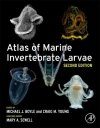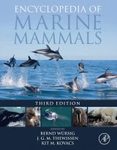About this book
Atlas of Marine Invertebrate Larvae, second edition covers the origins and history of marine larval science, contemporary state-of-the-art approaches to larval development and biology, and the highest-quality images and schematics showing the broadest diversity of marine larvae in the animal tree of life. This book illustrates larval body plans, the anatomy of their organ systems (muscular, sensory, digestive), including distinct ciliation patterns that facilitate swimming, and the complex metamorphic changes they undergo between different larval and growth stages. Each chapter contains in-text references that direct readers to both historical and contemporary research on the forms, functions, behaviours and biogeographical distributions of marine larvae. This book is a valuable and foundational resource for biologists across various disciplines, including biodiversity, biogeography, and developmental biology. Ecologists, taxonomists, oceanographers, and environmental scientists also benefit from the complete coverage of marine larval forms offered by this book. Additionally, the broad scope and phyletic coverage of marine biodiversity presented in Atlas of Marine Invertebrate Larvae is ideal for students in oceanography and marine biology, animal development, biological oceanography and invertebrate zoology.
Contents
1. Fundamentals of Larval Biology
2. The Early Discovery of Larval Forms
3. Origins and Diversification of Marine Invertebrate Larvae
4. Marine Invertebrate Larval Types
NON-BILATERIA
5. Phylum Porifera
6. Phylum Cnidaria
ECDYSOZOA
7. Phylum Loricifera
8. Phylum Priapulida
9. Phylum Arthropoda: Crustacea
SPIRALIA
10. Phyla Dicyemida and Orthonectida
11. Phylum Cycliophora
12. Phylum Entoprocta
13. Phylum Bryozoa
14. Phylum Platyhelminthes
15. Phylum Acanthocephala
16. Phylum Phoronida
17. Phylum Brachiopoda
18. Phylum Nemertea
19. Phylum Annelida
20. Phylum Sipuncula
21. Phylum Mollusca: Aculifera and Scaphopoda
22. Phylum Mollusca: Gastropoda
23. Phylum Mollusca: Bivalvia
24. Phylum Mollusca: Cephalopoda
DEUTEROSTOMIA
25. Phylum Echinodermata: Crinoidea
26. Phylum Echinodermata: Ophiuroidea
27. Phylum Echinodermata: Asteroidea
28. Phylum Echinodermata: Holothuroidea
29. Phylum Echinodermata: Echinoidea
30. Phylum Hemichordata
31. Phylum Chordata: Tunicata
32. Phylum Chordata: Cephalochordata
Customer Reviews
Biography
Michael Boyle is a Biologist and Principal Investigator of the Life Histories Program at the Smithsonian Marine Station. Dr Boyle is an early-career scientist with doctoral and post-doctoral research experience on the comparative development of embryonic and larval stages of marine annelids. He is an expert on the imaging of larval invertebrates with confocal laser scanning microscopy. His laboratory focuses on describing the molecular, genetic, and developmental diversity of marine invertebrate life cycles.
Craig Young is Professor of Biology and Director of the Oregon Institute of Marine Biology. Dr Young has devoted his professional research career to investigating the early life-history stages of marine benthic invertebrates, from the ocean surface to deep-sea environments worldwide. He is a leading authority with extensive experience investigating, describing and teaching the biology, ecology, behaviour and morphology of marine invertebrate larval forms. Dr Young returns to the second edition of Atlas of Marine Invertebrate Larvae to continue to lend his expertise and knowledge as a co-editor.
Mary Sewell is a Professor of Biological Science at the University of Auckland. She is an authority on the larval form, physiology and ecology of echinoderms and has worked on a wide variety of projects worldwide, from the tropics to the Antarctic and from the intertidal to abyssal depths. Dr Sewell returns as a co-editor of the second edition of Atlas of Marine Invertebrate Larvae given her background expertise on echinoderms.


































